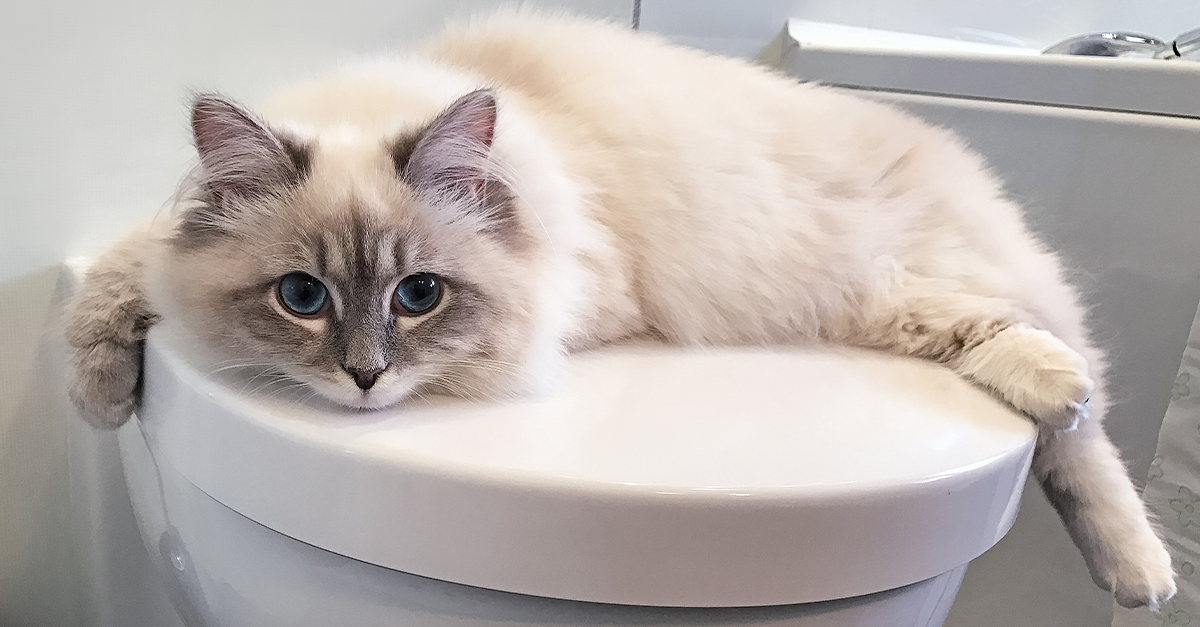How do you really feel with regards to How to Dispose of Cat Poop and Litter Without Plastic Bags?

Introduction
As pet cat owners, it's important to be mindful of exactly how we get rid of our feline buddies' waste. While it may seem convenient to purge pet cat poop down the bathroom, this practice can have detrimental effects for both the atmosphere and human health.
Environmental Impact
Purging feline poop presents hazardous microorganisms and bloodsuckers right into the water, positioning a substantial risk to water ecological communities. These impurities can negatively affect aquatic life and compromise water high quality.
Wellness Risks
Along with environmental issues, purging pet cat waste can also position health risks to people. Pet cat feces might contain Toxoplasma gondii, a parasite that can trigger toxoplasmosis-- a possibly extreme illness, particularly for expecting females and individuals with weakened body immune systems.
Alternatives to Flushing
Fortunately, there are more secure and a lot more responsible ways to get rid of pet cat poop. Take into consideration the following options:
1. Scoop and Dispose in Trash
One of the most usual approach of dealing with feline poop is to scoop it right into an eco-friendly bag and toss it in the garbage. Make certain to make use of a committed litter scoop and get rid of the waste immediately.
2. Use Biodegradable Litter
Select naturally degradable feline trash made from materials such as corn or wheat. These trashes are environmentally friendly and can be safely dealt with in the garbage.
3. Bury in the Yard
If you have a lawn, consider burying cat waste in a marked location far from vegetable gardens and water sources. Make certain to dig deep adequate to stop contamination of groundwater.
4. Mount a Pet Waste Disposal System
Buy a family pet waste disposal system specifically designed for pet cat waste. These systems make use of enzymes to break down the waste, minimizing odor and ecological influence.
Conclusion
Responsible animal ownership prolongs beyond offering food and shelter-- it additionally entails appropriate waste monitoring. By refraining from flushing pet cat poop down the bathroom and choosing alternative disposal approaches, we can lessen our ecological impact and secure human wellness.
Why You Should NEVER Flush Cat Poop (and/or Litter) Down Your Toilet
The Problem with Litter
The main function of litter is to solidify and adhere to your cat’s waste. While this makes litter excellent for collecting cat poop and urine, it’s also the exact property that makes it a nightmare when flushed down the toilet.
Cat litter can and will clog pipes. There is non-clumping litter, but it’s still quite heavy and can build up in pipes. This is true even of supposed “flushable litter.”
The problems only compound when the litter is already clumped into cat waste. Toilet paper is among the more flushable things, and even too much of that will clog a toilet.
The Problem with Cat Poop
Sewers and septic systems are designed with human waste in mind. The microbes that help break down human waste don’t work on cat waste. Additionally, cat poop plays host to the parasite Toxoplasma gondii.
When flushed, this parasite can enter the environment in places it was never meant to, posing a risk to pregnant women, their unborn children, and other people with compromised immune systems. While it might not seem possible, flushing cat poop can indeed introduce this parasite to the public water supply.
These reasons are why, even if you’ve trained your cat to go on the toilet and flush, which is possible, it’s still not a good idea. Also, pregnant women and the immunocompromised shouldn’t change litter, either.
How to Handle Litter
The best way to handle litter is to simply put it in a plastic bag and place it in the trash. Avoiding environmental risks and possible plumbing damage is worth the extra effort.
You can also invest in devices that seal away your cat’s waste in a separate compartment, so you don’t have to change the litter nearly as often. They’re also safer for pet owners because they limit the possibility of Toxoplasma gondii exposure.
Disposing of litter the old-fashioned way will ensure you won’t have to worry about any issues that flushing the waste can potentially cause.
Take Care of Clogged Pipes with Stephens Plumbing, Heating & Air Conditioning
The reasons you should never flush cat poop down your toilet are numerous, but sometimes the inevitable happens despite your best efforts.
Stephens Plumbing, Heating & Air Conditioning is ready to help if you’re experiencing litter-blocked plumbing. Whether you need us in an emergency or want to schedule regular maintenance, we’re here for you.
https://www.stephensplumbing.net/bathroom-plumbing/never-flush-cat-poop-down-your-toilet/

I am very interested in Don’t flush cat feces down the toilet and I really hope you appreciated my piece. So long as you liked our blog posting if you please do not forget to pass it around. Many thanks for your time. Visit again soon.
Book Maintenance
Comments on “Avoid Clogs and Damage: Never Flush Cat Poop Down Your Toilet - Professional Recommendations”